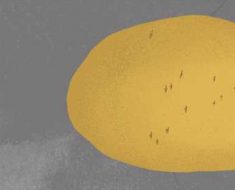
A new study published in the journal Neuropsychologia examines this paradox and what role our brains may play in maintaining it.
The American Heart Association (AHA) state that we only need 150 minutes of moderate exercise or 75 minutes of vigorous exercise each week to improve health.
However, in June, National Health Statistics Reports revealed that 77 percent of Americans are still not meeting even this weekly exercise requirement.
Why do we avoid exercise?
In an attempt to answer the question of why we stubbornly avoid exercise despite knowing that it is essential for our health, Matthieu Boisgontier — a postdoctoral researcher at the University of British Columbia’s Brain Behaviour Lab — recruited 29 young people to take part in a study.
In Boisgontier’s experiment, the participants controlled an onscreen avatar while electrodes registered their brain activity. Images representing either physical activity or physical inactivity would flash briefly on the screen.
The participants were required to move their avatars as quickly as they could toward the physical activity-related images and away from the inactivity-related images in one test, and the opposite way around in another.

‘More brainpower to reject inactive images’
Analyzing the data, the team found that the participants moved their avatars more quickly toward the physical activity images and away from the physical inactivity images than the other way round.
However, the brain-activity recordings — called electroencephalograms — demonstrated that participants expended significantly more brainpower when attempting to move their avatars away from the physical inactivity images than when they were required to move toward them.

“We knew from previous studies that people are faster at avoiding sedentary behaviours and moving toward active behaviours,” Boisgontier explains.
“The exciting novelty of our study is that it shows this faster avoidance of physical inactivity comes at a cost — and that is an increased involvement of brain resources. These results suggest that our brain is innately attracted to sedentary behaviours,” he adds.
He also notes that saving energy “has been essential for humans’ survival, as it allowed us to be more efficient in searching for food and shelter, competing for sexual partners, and avoiding predators.”
“The failure of public policies to counteract the pandemic of physical inactivity may be due to brain processes that have been developed and reinforced across evolution.”
Matthieu Boisgontier

Evolutionary basis for the exercise paradox?
Harvard’s Daniel E. Lieberman wrote a 2015 paper for Current Sports Medicine Reports on an evolutionary basis for the exercise paradox.
In it, he outlines the problem that public health guidelines have had only modest effects, with people instead “indulging their instincts to take it easy whenever possible and to eat a surfeit of highly processed, obesogenic foods.”
Lieberman argues that, as humans, our instincts are always to conserve energy, and that these instincts have only become a problem in modern society because we are no longer required to hunt for sustenance.
He explains that this overriding inclination toward laziness actually comes from our hunter-gatherer ancestors, who were burning more calories than they were able to ingest in their pursuit of food, and so conserved energy whenever they could.
Lieberman writes that “while humans are adapted to be physically active endurance athletes, we are just as adapted to be inactive whenever possible. It is natural and normal to be physically lazy.”
He argues that, to counter this, strategies are needed to make physical activity more fun and like “play,” or that we should restructure our environments to require more day-to-day physical activity.
“Until we do so effectively,” Lieberman concludes, “we can expect to remain trapped in a pernicious vicious circle in which, by treating the symptoms rather than the causes of diseases that are caused by physical inactivity, we will permit the exercise paradox to persist and worsen.”
Source: Read Full Article





